from 0 review
1 Day
Daily Tour
Unlimited
___

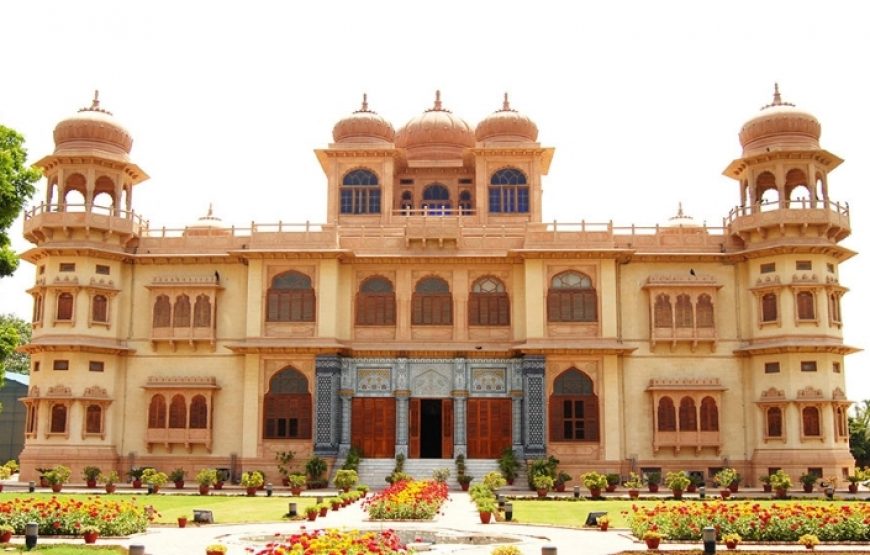
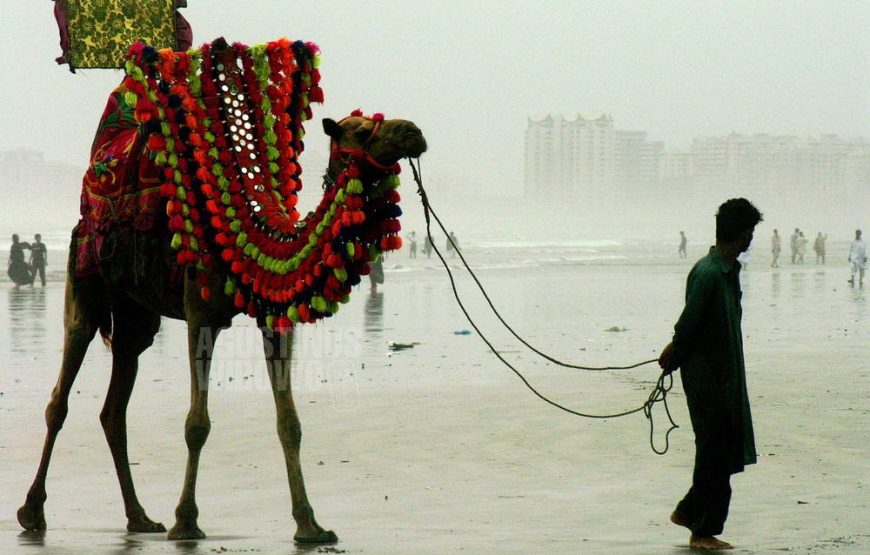

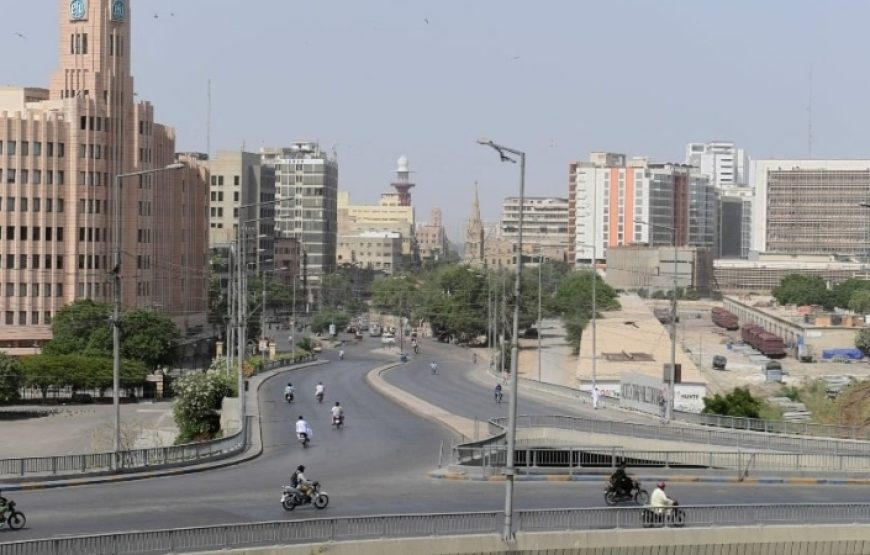
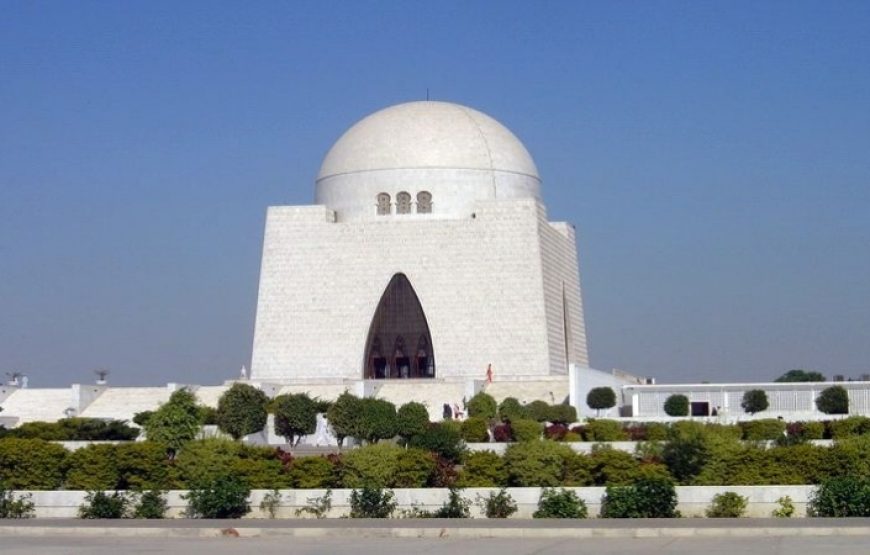
Karachi is a magnificent tourist destination and Pakistan’s largest city, known for its diverse culture, vibrant energy, and coastal charm. As the country’s economic hub and a melting pot of various ethnicities and traditions, Karachi offers a unique blend of historical landmarks, modern attractions, and stunning seaside views.
The city is home to several iconic sites, such as the Quaid-e-Azam’s Mausoleum (Mazar-e-Quaid), a striking marble monument dedicated to Pakistan’s founding father, and the Mohatta Palace, a beautiful example of Indo-Saracenic architecture now serving as a museum and cultural center. The Pakistan Maritime Museum and the National Museum of Pakistan provide fascinating insights into the country’s maritime and historical heritage.
Karachi’s coastline features numerous popular beaches like Clifton Beach, Hawke’s Bay, and Sandspit, offering opportunities for relaxation, water sports, and picnics by the Arabian Sea. The city’s bustling markets, such as Zainab Market and Empress Market, are perfect for those looking to experience local shopping and street food.
The city also boasts a lively arts and entertainment scene, with several theaters, art galleries, and music festivals reflecting its dynamic culture. For nature lovers, Karachi offers parks like Bagh Ibne Qasim and Karachi Safari Park, which provide a green escape amidst the urban landscape.
With its diverse cuisine, ranging from traditional Pakistani dishes to international flavors, and a bustling nightlife, Karachi offers an exciting experience for travelers. Its rich blend of history, modernity, and coastal allure makes it a captivating destination for those looking to explore Pakistan’s unique urban charm.
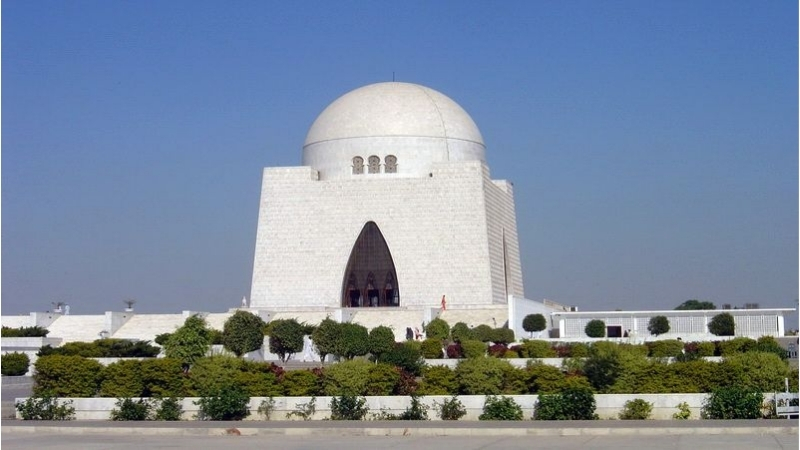
A prominent landmark dedicated to Muhammad Ali Jinnah, the founder of Pakistan, Mazar-e-Quaid is a striking white marble mausoleum that blends traditional and modern Islamic architecture, inspired by the Samanid Mausoleum in Uzbekistan. Surrounded by lush gardens, it offers a serene environment for reflection. The mausoleum also houses the graves of Fatima Jinnah and Liaquat Ali Khan. Designed by architect Yahya Merchant and built between 1958 and 1968, the structure features an elegant exterior of white marble and an interior adorned with a four-tiered Chinese crystal chandelier and an Iranian silver railing.
Also known as Flagstaff House, Quaid-e-Azam House Museum was the residence of Muhammad Ali Jinnah from 1944 until his death in 1948. Designed by British architect Moses Somake, this double-story structure is characterized by its yellow stone, arched openings, and carved pillars. It now serves as a museum preserving Jinnah’s legacy, displaying his personal belongings and historical artifacts. The house was purchased by the Pakistani government in 1985, and today it stands as a testament to Jinnah’s enduring influence, offering visitors a glimpse into the life of Pakistan’s founding father.
Wazir Mansion, located in Kharadar, Karachi, is the birthplace of Pakistan’s founder, Muhammad Ali Jinnah. This historical building, constructed from stone and lime plaster, dates back to the 1860s and now serves as a museum showcasing artifacts and memorabilia related to Jinnah’s early life. The mansion’s preserved rooms provide insights into the early years of Jinnah, offering a unique historical experience for visitors interested in the life of one of the most important figures in Pakistan’s history.
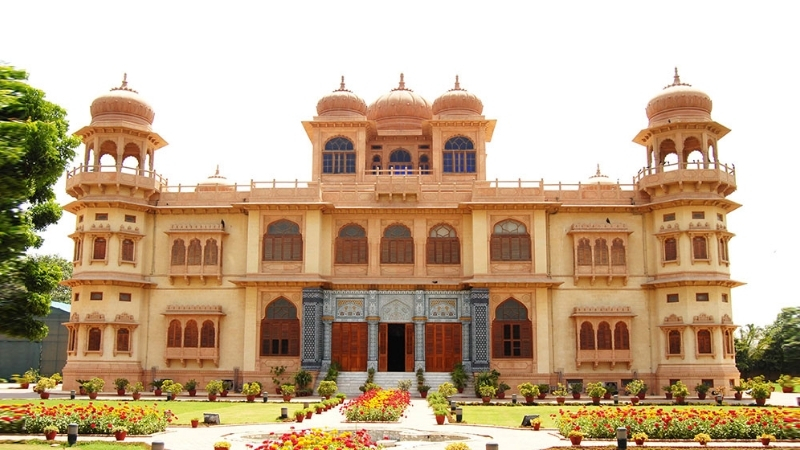
Built in 1925 by Shivratan Chandraratan Mohatta as his summer residence, Mohatta Palace exemplifies Indo-Saracenic architecture with its blend of pink Jodhpur stone and local yellow stone from Gizri. Now a museum and cultural center, it showcases art, cultural artifacts, and historical exhibits. The palace's architecture reflects distinctive Rajasthani influences, and its terrace was dedicated to the Hindu God, Lord Shiva. Mohatta only enjoyed this palace until the partition of India, after which he left for India, making it a key historical and cultural landmark in Karachi.

Frere Hall, a historic Gothic-style building constructed in honor of Sir Henry Bartle Edward Frere, stands as a cultural hub in Karachi. Built in the 1860s with Karachi limestone, this colonial-era structure features an elegant yellowish tower, two floors with a grand hall, an orchestral gallery, and the Liaquat Municipal Library. The hall hosts various art exhibitions and cultural events, surrounded by beautifully landscaped gardens. Designed by Henry Saint Clair Wilkins, Frere Hall remains a significant testament to Karachi's colonial past and continues to attract history enthusiasts and art lovers.
Located on Sarwar Shaheed Road, Hindu Gymkhana is an architectural gem from the colonial era, originally established in 1925 as a club for Karachi’s Hindu elite. The building blends Mughal and Hindu architectural influences and serves as the home of the National Academy of Performing Arts (NAPA). Spanning an area of about 47,000 square yards, it narrowly escaped demolition in 1984 thanks to preservation efforts by the Heritage Foundation of Pakistan. Today, it continues to play a significant role in preserving the performing arts and cultural heritage of Karachi.
The National Museum of Pakistan is Karachi’s largest museum, featuring an extensive collection of artifacts representing the country’s rich cultural, historical, and archaeological heritage. With exhibits ranging from the Indus Valley Civilization to Islamic art, the museum houses over 58,000 coins, rare manuscripts, and antiquities. Established in 1950, it offers visitors a comprehensive overview of Pakistan’s history through eleven galleries showcasing everything from ancient relics to contemporary art, making it an essential stop for history enthusiasts.
The PAF Museum in Karachi is an aviation enthusiast’s dream, showcasing a wide range of aircraft, equipment, and memorabilia related to the Pakistan Air Force. The museum features real planes, fighter jets, and models from World War I and II, providing insights into the Air Force’s history, particularly its role during the 1965 war with India. Opened in 1997, the museum’s outdoor and indoor exhibits offer an engaging educational experience, highlighting Pakistan’s aerial defense heritage.
Pakistan Maritime Museum is a premier attraction showcasing the country’s naval history through a collection of maritime artifacts, ship models, and naval vessels. Spread over 28 acres, the museum includes six galleries and an auditorium, providing educational insights into Pakistan’s maritime heritage. The museum complex also features an actual submarine, making it a unique destination for those interested in naval history. The well-maintained outdoor exhibits and interactive displays provide an engaging experience for visitors of all ages, making it a must-see attraction in Karachi.
Located on I.I. Chundrigar Road, the State Bank Museum is a well-preserved art gallery that traces the evolution of currency and banking in Pakistan. The museum features extensive displays of stamps, coins, and currency notes, alongside artworks by prominent artists, including frescoes by Sadequain. Housed in a 1920s red stone building resembling Greek architectural styles, the museum also offers a glimpse into the economic history of the region. The museum is an informative stop for those interested in finance, art, and history.
As Karachi’s largest park, Bagh Ibne Qasim spans 130 acres near Clifton Beach and attracts millions of visitors annually. Named after the Arab conqueror Muhammad Bin Qasim, this expansive park features lush lawns, fountains, walking tracks, and a rose garden. It provides a serene environment for relaxation, jogging, and family outings. With a capacity to accommodate around 300,000 people, the park is enhanced with lighting towers, stone benches, and dinosaur murals, making it a popular destination for locals seeking a peaceful retreat amid the bustling city.
Empress Market, located in the heart of Karachi’s Saddar district, is a bustling marketplace dating back to the British colonial era. Built between 1884 and 1889 in honor of Queen Victoria, the market offers a vibrant shopping experience with a variety of goods, including spices, textiles, antiques, and groceries. It holds historical significance as it was built on the site where several rebels were executed after the 1857 uprising. The market remains a lively center of commerce, reflecting the city’s rich cultural diversity and colonial past.
Dolmen Mall Clifton is one of Karachi’s premier shopping destinations, offering a wide range of local and international brands, dining options, and entertainment facilities. The mall combines modern architecture with a variety of shopping and leisure activities, making it a popular choice for families and tourists alike. It provides an upscale shopping experience with a diverse selection of restaurants and ample parking. Open daily, Dolmen Mall is not just a shopping hub but also a vibrant social space for those looking to unwind and enjoy the city’s contemporary lifestyle.
Port Grand is a waterfront entertainment and dining destination in Karachi, known for its open-air restaurants and stunning views of the Arabian Sea. The development features a variety of high-end eateries, an open-air theatre, and cultural attractions, making it a lively spot for evening outings. Visitors can enjoy a romantic sunset, live performances, and family-friendly activities, all set against the backdrop of the Karachi harbor. With its vibrant atmosphere and diverse offerings, Port Grand is a must-visit for those seeking a unique urban experience.
Manora Island, located near Karachi’s coastline, is a serene getaway known for its historic lighthouse, sandy beaches, and colonial-era naval forts. Easily accessible by a short ferry ride from Kemari Harbor, the island offers scenic sea views, boat rides, and opportunities to explore its historical sites. Manora is a perfect day trip destination for those looking to escape the city and enjoy the tranquility of the seaside, coupled with a touch of Karachi’s maritime history and natural beauty.

Situated along the Arabian Sea near Saddar, Clifton Beach is one of Karachi’s most popular coastal spots. Known for its golden sands, camel rides, and lively food stalls, it offers a vibrant atmosphere, especially during weekends and holidays. The beach is perfect for families and tourists looking to enjoy the seaside, with an adjacent amusement park adding to its charm. The lively scene and picturesque views of the Arabian Sea make Clifton Beach a magnet for both locals and visitors, providing a quintessential Karachi beach experience.
Hawke’s Bay and Sandspit Beach are among Karachi’s quieter coastal spots, known for their clear waters, golden sands, and serene atmosphere. Popular for swimming, sunbathing, and family picnics, these beaches also serve as nesting sites for sea turtles, adding a unique ecological aspect to the experience. Located about 25 km southwest of Karachi, these beaches provide a peaceful retreat from the city’s hustle, with rental huts, camel rides, and horse rides available to enhance the beachside experience.
Zainab Market, located in the bustling Saddar area of Karachi, is a vibrant marketplace known for its diverse range of handicrafts, textiles, leather goods, and souvenirs. It offers a lively shopping experience with a mix of local and imported items, making it a favorite destination for tourists looking for unique gifts. Situated near Zaibunissa Street, this iconic market is an ideal spot for bargain hunters and those wanting to explore Karachi’s lively market culture.

Masjid-e-Tooba, also known as Masjid-i-Tuba or the Gol Masjid, is a unique mosque in Karachi renowned for its architectural design. Built entirely of pure white marble, it features a massive 236-foot dome with no central support columns. The interior is adorned with thousands of mirror tiles, creating an illusion of twinkling stars. Designed by architect Dr. Babar Hamid Chauhan in 1969, the mosque ranks as the 18th largest in the world and accommodates up to 5,000 worshippers. Located in the Defence Housing Society, it is a popular attraction for visitors.
St. Patrick’s Cathedral, located near Empress Market in Saddar, is Karachi’s oldest church and a notable example of neo-Gothic architecture. Originally constructed in 1845 and rebuilt after a storm in 1885, the cathedral can accommodate around 1,500 worshippers. The cathedral’s beautiful design and historical significance have made it a protected monument under the Sindh Cultural Heritage Protection Act. As a prominent religious site, it continues to serve as a place of worship and an important cultural landmark in Karachi.
Do Darya is a popular waterfront dining destination along Karachi’s coastline, offering a unique culinary experience with numerous restaurants and cafes. Known for its stunning Arabian Sea views, it serves a variety of cuisines, including Pakistani, seafood, and international dishes. This vibrant spot is a favorite for both locals and tourists, providing a perfect setting to enjoy a meal while soaking in the picturesque scenery, especially at sunset. With its lively atmosphere and diverse dining options, Do Darya is a must-visit for food lovers in Karachi.
Thoughtful thoughts to your inbox